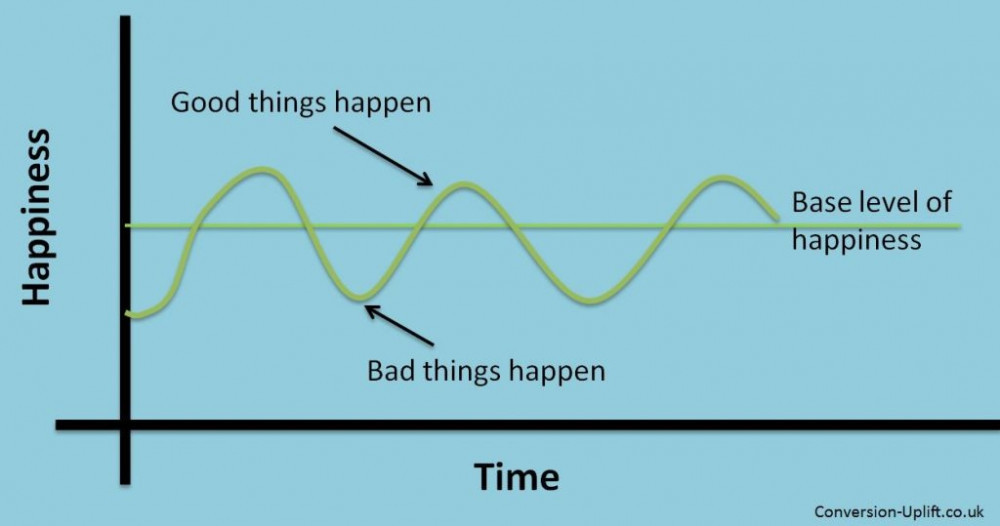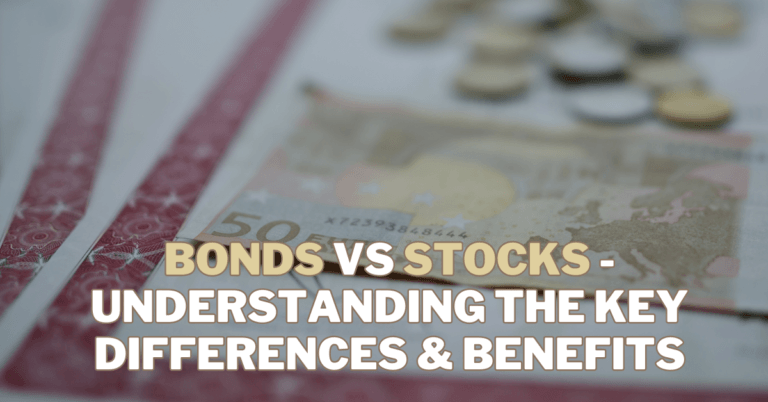Everything You Need To Know About The Hedonic Treadmill
Everything You Need To Know About The Hedonic Treadmill
According to psychologists, when people have a positive experience — such as a long-awaited promotion, a new automobile, or a winning lottery ticket — the rush of euphoria they feel is likely to return to a stable personal baseline over time. The “hedonic treadmill,” also known as hedonic adaptation, is a phenomenon that occurs in people.
Surprisingly, the same idea holds true in the face of adversity. Most of the time, when individuals suffer a loss or a setback, the bad emotions that accompany it go away with time.
People ultimately heal, and although their lives may be changed, their emotions normally revert to their baseline condition over time. What's the story behind this change? And what does science have to say about the human predisposition to maintain a relatively consistent level of happiness despite life’s peaks and valleys?
Want to Start Making Money Online?
Try My #1 Recommendation Program!
What Is The Hedonic Treadmill, Exactly?
Hedonic adaptation refers to a person's capacity to adapt to constantly changing conditions. The euphoria fades. Rage dissipates. Even the most powerful emotion, sadness, fades with time. That is to say, although the impacts of large events continue to be felt on a daily basis, our emotions return to a state of homeostasis.
We re-enter the hedonistic treadmill in search of new objectives, ambitions, and wants. This skill, according to psychologists, may be linked to human survival. Putting previous experiences in the emotional “background” may help us cope with current situations.
What Does One Know About It?
The hedonic treadmill is based on the assumption that people's happiness levels tend to return to a level that is consistent with their personality and heredity.
According to some psychologists, up to 50% of your ability for happiness is inherited. Some experts, though, would add a word of warning. For one thing, the concept of “happiness,” as well as the definition of “well-being,” is famously ambiguous, making it difficult to compare research — and, for that matter, real individuals.
To account for personal happiness, several researchers employ questionnaires, interviews, and subjective assessments. Individual interpretations of these measurements are common. Some childhood events, according to researchers, do seem to create lifetime changes in emotional states.
People who marry are more likely to be happy in the long run than those who do not. Divorced or bereaved people are more likely to be unhappy for a long period following (again, generally speaking).
A long-term (perhaps even permanent) shift in personal happiness may be caused by pleasure or loss of pleasure. So, what factors influence whether an experience leads to long-term contentment or effervescent pleasure?
Why Are Certain Occurrences More Likely Than Others To Succumb To Hedonic Adaptation?
Sensory experiences, which make you joyful because they entail pleasant bodily sensations, and strongly emotional experiences, on the other hand, are less long-lasting than other pleasures. Because novelty wears off fast, if you've relocated to a new place or started a new career, you could see a boost in happiness because you're doing something different.
However, as you get more adjusted to your new position, the sensations may fade. Another aspect that might affect how long your sentiments last is whether or not you compare yourself to others while looking for happiness. According to studies, the satisfaction you get when you pursue something in part because other others have it fades quickly.
If you've achieved something that you appreciate for its own reasons, regardless of whether or not anybody else wants it, your happiness may last longer. Your own sentimentality might also help to prolong happy sentiments.
Researchers evaluated the findings of seven studies in a 2015 study. They discovered that when individuals attach emotional significance to an experience, their enjoyment is more consistent over time.
That might be because individuals associate a sentimental connection with an event rather than thinking about it on its own. When you admire the potholder your kid crocheted for you at camp many years ago, the upswell of happiness is less about the pot holder's beauty and more about the child who made it.
Happiness In Its Many Forms
The distinction between these two types of pleasure: hedonism and eudaimonia, is one of the many effective methods to classify various forms of happiness.
Hedonism
The pursuit of pleasure is referred to as hedonism. The word alludes to the feeling of instant enjoyment we get when we do something we like or avoid doing something we don't. Food and sex are two hedonic pleasure categories that are commonly addressed. However, any activity, from reading to playing video games, may qualify. Consider hedonism to be a kind of pleasure.
Eudaimonia
Another facet of happiness is eudaimonia, which is the sense of satisfaction we get from engaging in worthwhile activities. The enjoyment we feel is less vulnerable to the hedonic treadmill when we do things to benefit other people, or when we do things to improve individually or to establish a sense of purpose in life.
Eudaimonic bliss takes longer to fade than hedonic happiness, according to studies. Both hedonic and eudaimonic happiness, on the other hand, aid in the development of resilience, or the capacity to bounce back from setbacks and losses. A phase of grieving is normal and appropriate after a life event that has left you reeling from sadness or loss.
Finding methods to experience both personal pleasure and purpose when you're ready might help you get closer to a new feeling of happiness — even if it's not the same as the happiness you had before a severe loss.
Is there a method to reduce the negative consequences of hedonic adaptation and increase happiness?
The main events that will influence your life are not always predictable. You also can't modify the hereditary elements that determine your happiness threshold. The good news is that you can improve your ability to be happy in the long run. According to researchers, you may be able to pick habits and activities that affect up to 40% of your overall happiness.
Want to Start Making Money Online?
Try My #1 Recommendation Program!
Here are some strategies for reducing the hedonic treadmill's negative impacts
Mindfulness Is A Good Thing To Do
Mindfulness is one of the numerous styles of meditation that has been shown to help people feel happier and more positive. Mindfulness may help you relax by focusing on your breathing.
It may help you stay grounded in the present moment by assisting you in paying close attention to what's going on around you and in your body. Mindfulness boosted the ability for hedonic enjoyment in persons with chronic pain, according to research.
Make Yourself A Better Person
Your inner feeling of well-being is linked to your personal growth. According to a study, you may be able to achieve a longer-lasting feeling of fulfillment by:
- pursuing your own objectives with purpose.
- seeing a bright future for yourself
- engaging in things that put you in a flow state
- utilize a reliable source, such as athletics, music, or any other area where your skills blossom
Thank You For Everything
Humans are one of the few species who can get pleasure from reminiscing about previous joys. Gratitude – consciously expressing appreciation for a favourable event — has been linked to a greater capacity for pleasure, according to research. Slowing hedonic adaptation may also be accomplished by continuing to reflect on and appreciate the events and situations that shaped your life.
Relationships Are Worth Investing In
Relationships have been identified as a key to long-term happiness in studies conducted all around the globe over many decades. We all have different numbers of individuals in our trusted circle and different amounts of time we wish to spend socializing. However, research shows that the happiest individuals are those who have created supportive connections and live in countries with well-developed social resources.
Acts Of Altruistic Service To Others Are Encouraged
According to research, doing pro-social acts of service may help you achieve long-term satisfaction. Happiness is more likely to vary if it stems from self-centred interests than the pleasure derived from doing something unselfish, according to research. This inner state is described by researchers as “genuine, long-lasting enjoyment,” which leads to “contentment and inner serenity.”
Last But Not Least, Purchase The Ice Cream
Your mind is a wonder of complexity. While it's simple to distinguish hedonic pleasures from higher satisfaction on paper, the two interact in your brain. The connection between hedonic and eudaimonic bliss in the brain's pleasure regions is still being discovered by neuroanatomy experts. In reality, the inability to appreciate basic, hedonic joys is a symptom of a variety of severe mental illnesses.
Just remember that, although hedonistic pleasures are transient, they are a crucial element of your total health. So throw down the windows, crank up the music, and indulge in a decent scoop of chocolate chip ice cream. After all, simple pleasures are essential to your emotional and mental well-being.
Are You Tired Of Scams?
Try The Most-Trusted Training Platform To Make Money Online!
Last But Not Least
The hedonistic treadmill is a metaphor for our need to chase pleasure after pleasure. This is because the spike of enjoyment experienced following a great event is likely to fade over time, returning to a constant personal baseline. Similarly, the bad emotions you experience following a stressful occurrence tend to fade with time.
However, there is strong evidence that certain types of happiness last longer than others. Pleasure derived from unselfish deeds, for example, has a longer lifespan than bodily pleasures.
Mindfulness, personal development, gratitude, and investing in relationships have all been shown to improve long-term well-being, according to research. Learning to appreciate little joys when they occur may also help you maintain your happiness for a longer period of time.
When was the last time you fantasized about purchasing a new vehicle, earning a promotion at work, moving into a bigger home, or meeting a life partner? Do you recall daydreaming about how pleased you'd be if you achieved those goals?
If you eventually got one of those items, you could have discovered that the “happy boost” didn't last as long as you'd hoped or wasn't as strong as you'd hoped. This is a cycle that most of us have experienced.
The hedonic treadmill (also known as hedonic adaptation) is a hypothesis that states that humans, regardless of their circumstances, return to their baseline level of happiness.
A Brief History
In their work “Hedonic Relativism and Planning the Good Society,” two psychologists, Brickman and Campbell, were the first to write about this topic in 1971. Hedonic adaptation was the term used in the 1970s to describe the notion. Michael Eysenck likened hedonic adaptation to a treadmill, a more current and accessible analogy, 20 years ago. The hedonic treadmill was created as a result.
Set Point For Happiness
According to studies, our circumstances do not account for the majority of our happiness. Every individual has a happy set point, which is their genetically established proclivity for joy. About half of the variance in happiness between people may be attributed to this set point for happiness.
According to researcher Sonja Lyubomirsky in her book The How of Happiness, “If you suffer from a low set point, meaning you tend to drift toward sorrow or despair, don't be too harsh on yourself.” You're dealing with a loaded deck to some degree.
Fifty percent isn't 100 percent, so there's still room for development. Around 40% of your pleasure is determined by your behaviours, ideas, and attitudes, which is extremely important. (The last ten percent is decided by outside factors.)
The hedonic treadmill hypothesis asserts that no matter what happens to humans, their happiness levels will ultimately revert to their baselines. Take a typical scenario to illustrate this theory: if you get married, move into a new home, receive a promotion, lose a job, have an accident, and so on, you're likely to return to your established point of happiness over time.
After some time has passed, you will be restored to your previous level of happiness. The association between nice things occurring in a period of time and happy feelings experienced during that same period might be a probable misattribution of this notion.
The steady stream of happiness may cause a person to assume that his or her overall happiness has improved if they are lucky enough to encounter an abundance of pleasant experiences spread out over a relatively short period of time. However, this is not supported by the study.
Want To Learn How To Create Your Own Website And Online Business?
Try My #1 Recommendation Training And Hosting Platform!
Research
A noteworthy piece of study on the hedonic treadmill, in addition to Brickman and Campbell's initial research (1971), looked at two groups of individuals: one was a group of persons who had won huge lottery wins, and the other was a group of accident victims who were now paralyzed (including quadriplegic and paraplegic people).
In the long run, neither group looked to be happier than the other, according to the study. Brickman, Coates, and Janoff-Bulman (Brickman, Coates, & Janoff-Bulman, 1978). Of course, lottery winners and paralysis patients both had happy and sorrowful first emotions.
The benefits were short-lived, with participants in both groups quickly reverting to their former levels of contentment. Brickman and Campbell claimed that humans respond instantly to positive and terrible events, but then return to neutrality after a short period of time in their initial hedonic treadmill hypothesis (1971).
If Brickman and Campbell's hypothesis is right, however, any attempt to enhance happiness is futile — meaning that if our happiness set point is on the low end of the range, we're bound to misery. The good news is that further research conducted by Ed Diener has improved the original results and provided a better knowledge of the hedonic cycle's nuances.
1. The Set Point Is Not In The Neutral Range
Diener, Lucas, and Scollon (2006) showed that around three-quarters of the samples investigated reported affect balance scores (positive and negative moods and emotions) above neutral after analyzing data from previous research on the hedonic treadmill.
The well-being levels were above neutral in a variety of communities, including the Amish and the African Maasai. Even if individuals adjust and return to a former state, this is a good outcome rather than a neutral one.
2. The Set Point Is Unique To Each Person
According to a new study, even though everyone has a fixed point, it varies a lot from person to person. Personality qualities influence a person's pleasure level, and happiness is modestly heritable. As a result, different personality qualities may incline people to various amounts of happiness.
3. We Have A Number Of Different Set Points
The concept of a set point implies that everyone has a single, constant level of happiness. However, more recent work by Diener, Suh, Lucas, and Smith (1999) complicates this idea by claiming that happiness is made up of a variety of elements that all contribute to happiness and that these components may occasionally go in opposite directions.
For example, one may have a drop in both happy and negative emotions while experiencing an increase in life satisfaction. The essential premise is that many aspects of happiness might go in opposite directions at the same time.
4. Happiness Is A Fluid Concept
One of the most common conclusions derived from the first research is that no matter what we do, we won't be able to make a long-term difference in our levels of happiness and life satisfaction. Because research on this area is limited, examining the well-being levels of countries may assist to explain this.
If there are significant disparities in well-being among countries that can be expected based on the objective qualities of those nations, this might indicate that conditions have a long-term influence on well-being.
One research found that a country's “higher-than-average income” and “support for human rights” were major predictors of its citizens' well-being. The Economist also stated that nine indicators, including gross domestic product per person, life expectancy at birth, political stability, and divorce rates, can explain 85 percent of the variation in well-being across countries.
5. Individual Adaptation Discrepancies
Another assumption based on the original hedonic treadmill hypothesis is that everyone adapts in the same manner. Individual disparities in the pace and amount of adaptation have been discovered, according to a study. Studies on how individuals adjust to marriage, for example, indicated that happy people would respond more strongly to good occurrences.
However, the findings revealed that those who were dissatisfied with their lives were more likely to profit from marriage in the long run. One theory is that unusual occurrences or a significant change in our life may cause the largest change in happiness.
I trust you enjoyed this article on Everything You Need To Know About The Hedonic Treadmill. Would you please stay tuned for more articles to come? Take care!
JeannetteZ
Want to Learn How to Build Your Own Home-Based Online Business & Start Making Money Online From Your Comfortable Couch?
Try Wealthy Affiliate!
Your Opinion Is Important To Me
Thoughts? Ideas? Questions? I would love to hear from you. Please leave me your questions, experiences, remarks, and suggestions about Everything You Need To Know About The Hedonic Treadmill, in the comments below. You can also contact me by email at Jeannette@WorkFromAnywhereInTheWorld.com.
You may also enjoy the following articles:
How To Market A Product In 12 Easy Steps
How To Write A Great Cover Letter
What Is A Hedge Fund And Should You Invest In One?
The Most Popular YouTubers Of 2022












